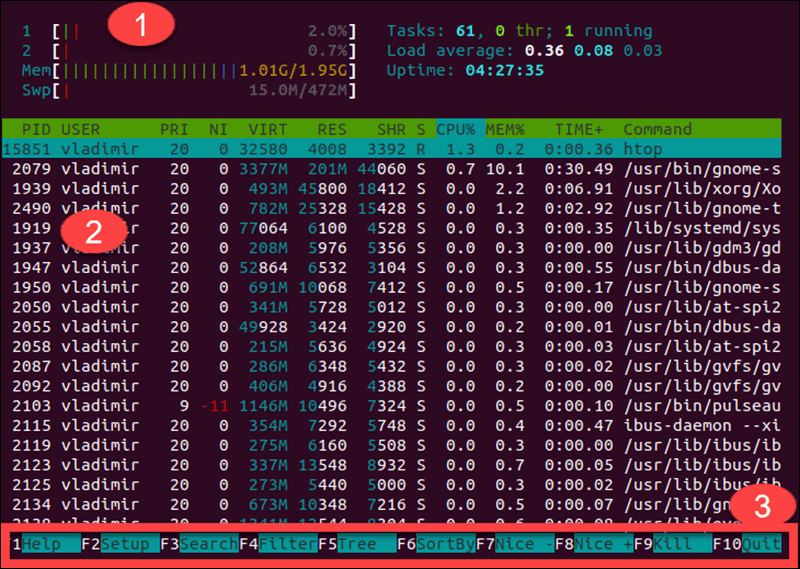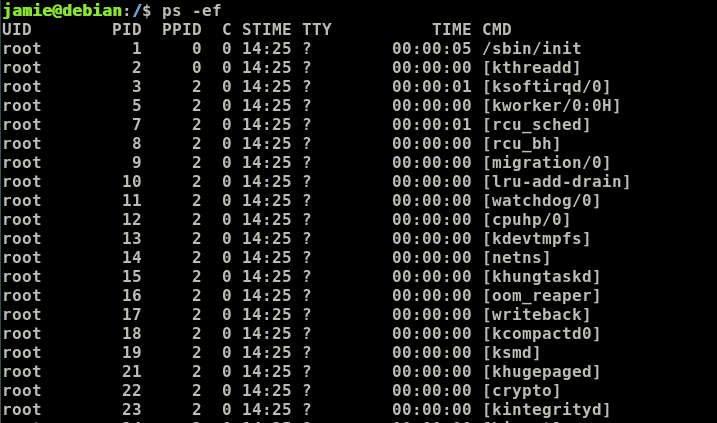
What if you want to get information about any specific process? For that, you can use the ps -ef command and pipe it with the gre command alongside its process name, as we did here to find all the information of the process named firefox: $ ps -ef | grep firefoxĪlthough the output is quite messy, you can find the relevant information easily, such as username process id, parent process id, and much more, as highlighted in the above image. You have seen in the above output that all the running processes are listed.

PID: The process ID (PID) of the running process.UID: The user ID (UID) who started the process.The output of the ps -ef command has several columns that are explained as follows: The primary usage of the ps -ef command without examples is to get the list of all the running processes in the system. Until now, you have learned the basic syntax and the working of the ps -ef command in Linux let’s dig into some examples for a practical demonstration of the command.
#Psef linux command full#
-f: An option to display the output in a full format, which includes additional details such as process owner, parent process ID ( PPID), CPU usage, and memory usage.-e: An option to include all running processes in the output, including those not associated with the current terminal session.ps: The command to display information about running processes on the system.The components of the ps -ef command are as follows: Well, let’s write it and elaborate on the entities in it.

The basic syntax of the ps -ef command is the same as it is being written, i.e., ps – ef. However, all the practical demonstration shown in the post is carried out on Ubuntu 22.04. Considering the importance of the ps -ef command, this post will list a detailed explanation of the command with the help of suitable examples.Īlthough, the ps -ef command is applicable on all the Linux distributions.

The ps -ef command has numerous benefits, such as process identification, system monitoring, process management, security auditing, etc. The ps command stands for “process status,” and the -ef option tells the command to display information about all processes in a full format. In Linux, ps -ef is a command that displays information about running processes on the system.


 0 kommentar(er)
0 kommentar(er)
